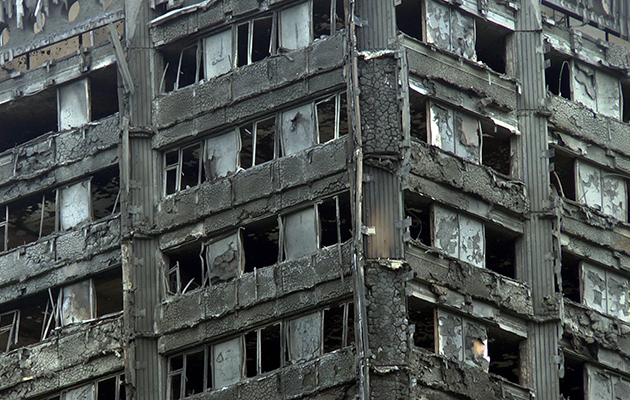|
|
||
|
The exclusion of architects from the construction process allows bad practice to go unchecked, writes Russell Curtis Passengers touching down at London City Airport are likely unaware that buried beneath the tarmac lie the brayed concrete remains of a 22-storey tower, the demolition of which signified a watershed moment in British housing. Erected hastily towards the end of the 1960s, Ronan Point concluded two decades of rapid housebuilding. At its peak, some 400,000 homes were completed annually, and in the fervour to replace the bomb-damaged slums of Victorian London it was perhaps inevitable there would be compromises in quality, with budgetary constraints eclipsing architectural ambitions and social concerns. It was remarkable that on that spring morning of May 1968 so few people lost their lives. A gas explosion in a kitchen on the 18th floor blew out a load-bearing panel, which led to a collapse of one corner of the building, killing four. Although it stood for nearly 20 more years, Ronan Point was eventually pulled down in 1986, along with a number of other blocks built using the same construction methods, and deposited under the nearby airport runway. This notorious event had two important outcomes, the effects of which we are still feeling today. The first was a comprehensive review of the Building Regulations — the statutory instrument that determines a building’s suitability for habitation — which were revised to outlaw the form of construction that enabled the ‘disproportionate collapse’ of the east London block. Secondly, it signalled an end to the British love affair with tower blocks and the modernist utopian dream. By the late 1970s we were building hardly any residential towers at all. Fifty years on, the housing crisis of the early 21st century has reacquainted London with the concept of high-rise living. Inflating land prices have meant that developers wring every last square foot of space from tiny patches of brownfield land scattered across the city. Many of those towers that survived the purge of the 1970s and 80s, previously decried as failed social experiments, have been snapped up by canny developers and rebranded as desirable places to live: ‘luxury flats’ in convenient, accessible locations. Towers that remained in public ownership underwent less glamorous refurbishment through the Decent Homes programme, announced by the then deputy prime minister John Prescott at the turn of the new century. This ambitious initiative demanded that, within a decade, all social housing achieve minimum levels of quality. Often this work included the replacement of kitchens and bathrooms; in some cases upgrades to windows, thermal insulation and cladding to ‘spruce up’ ageing concrete. Much of this work was carried out by a cabal of large construction companies who had become adept at offering councils a ‘one-stop shop’ of design and delivery, shielding the client from the risk of cost and programme overruns. Public clients, recoiling in paroxysms of fear at the prospect of capital projects running over budget, embraced this approach, taking comfort in the fact that fixed-price contracts would prevent costs unexpectedly spiralling out of control. As with the housebuilding boom of the late 1960s, the ambition of this new programme meant that design quality was sometimes of secondary importance to the need to deliver desperately needed new homes on time and within budget. A consequence of this approach was the gradual excision of the architect from the construction process. The profession became seen as contributing little other than cost and complication, and its responsibility withered away to a point where it was seen as useful only for picking colours of cladding and helping to navigate tricky planning committees. Its technical expertise, pursuit of quality and consideration for those affected by the work became of secondary importance – an inconvenience that the budget and programme could ill afford. Rather than working directly for public clients, the design team began to work instead for main contractors, isolating architects yet further from the communities they were supposed to serve. Just a few short weeks on from the Grenfell Tower catastrophe, it’s still too early to speculate as to why the fire spread with such terrifying rapidity. It may be that a particular configuration of standard building components contributed to the spread of flame across the outer skin of the building. Quite why in this case a small domestic blaze – of which there are many hundreds each year within tall residential buildings – led to so many deaths may take many months to determine. It’s also impossible to say whether more meaningful involvement from the architect could have mitigated the tragic effect of the Grenfell Tower fire, but it is apparent from other recent cases that their exclusion has allowed bad practice to seep unchecked into the construction process. The recent Cole Report into problems with a raft of contractor-led schools in Edinburgh identified poor construction and inadequate supervision as the principal reason for a large number of serious building failures. Architects used to serve a nobler cause; now they have little choice but to serve those who pay the bills. In his riposte to the Prince of Wales’s withering criticism of the profession in 1984, ex-RIBA president Maxwell Hutchinson claimed that the failure at Ronan Point was not because architects were involved in the construction. It was because they were not. Can it really be the case, half a century on, that we are back where we started? Russell Curtis is director of RCKa and a member of the London mayor’s design advocacy panel |
Words Russell Curtis
|
|
|
||




















